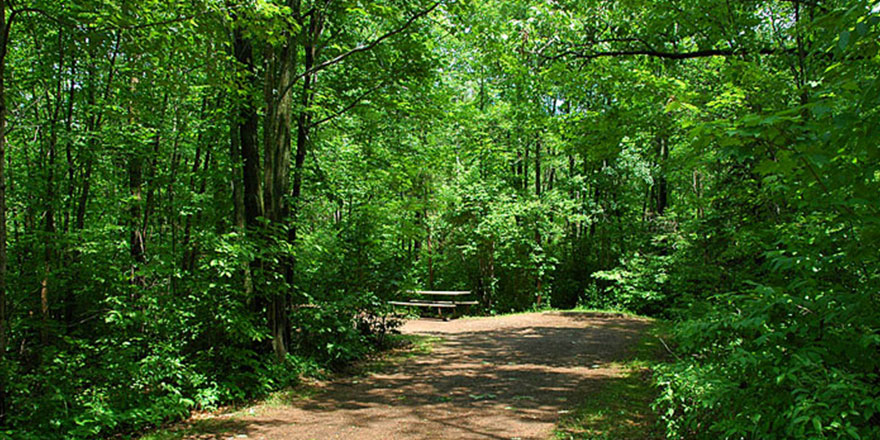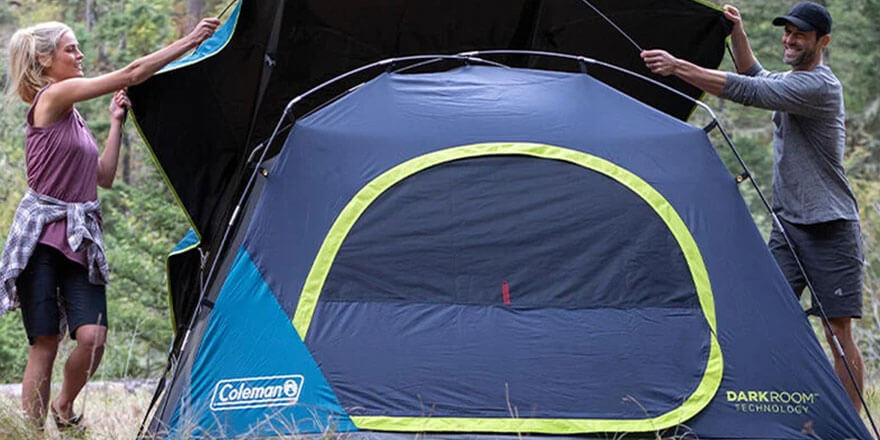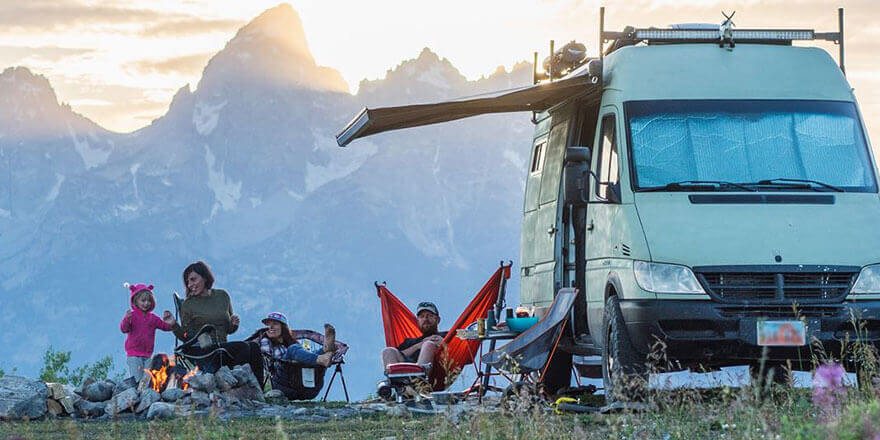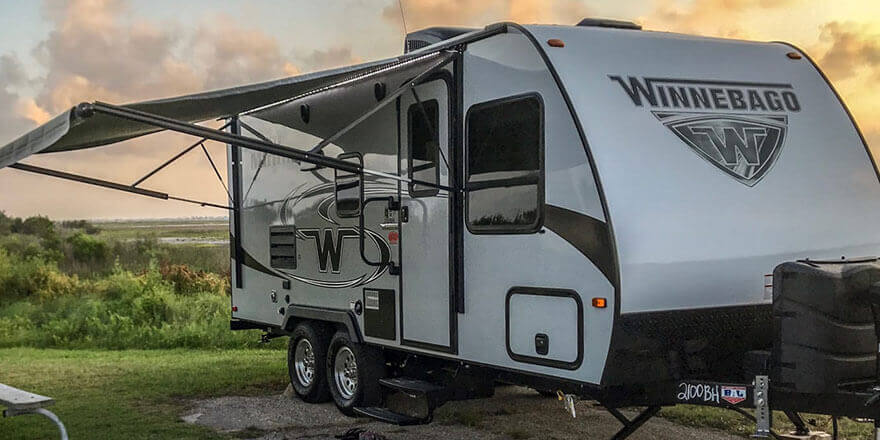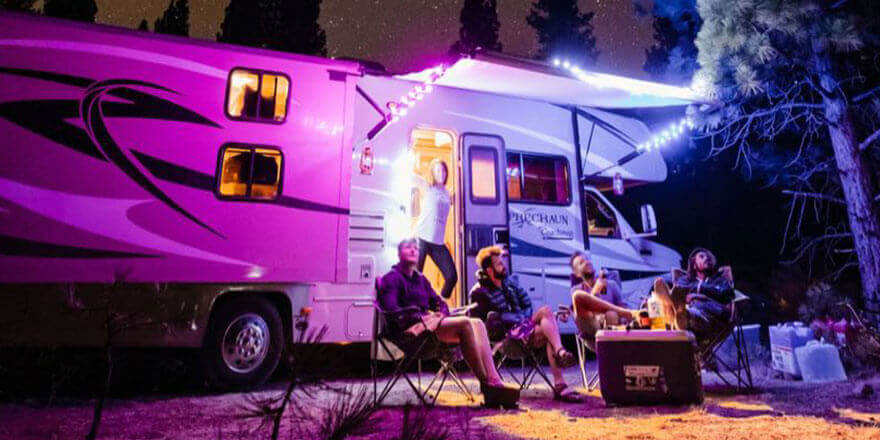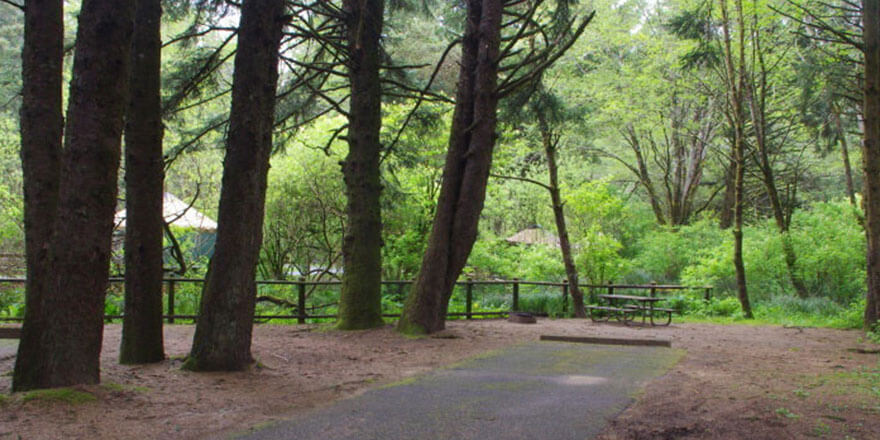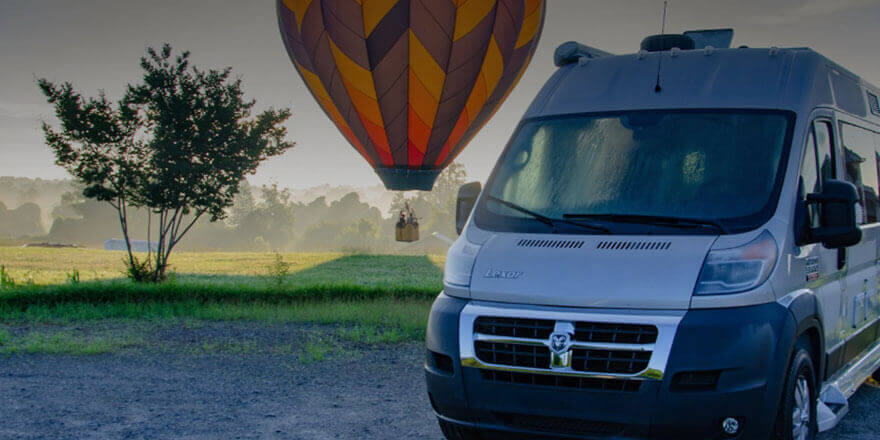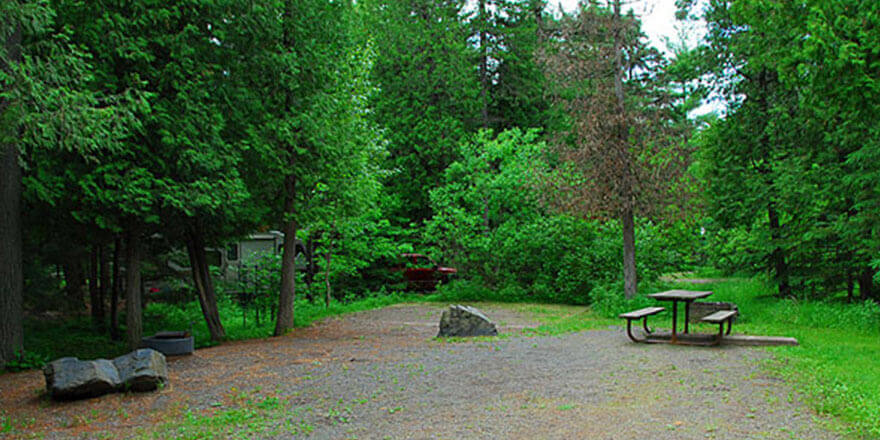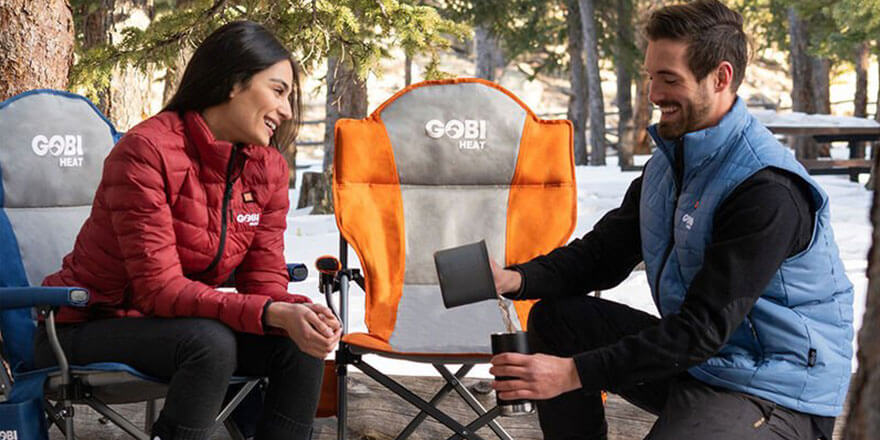How to Hike & Camp Safely in Bear Country
Bears are magnificent creatures, but most of us would rather not see one up close. When hiking and camping, it’s natural to be fearful of a bear encounter. The risk is small, but the consequence can be deadly. That’s why it’s essential to know these best practices for preventing bear encounters and how to act should you meet one.

Before You Leave
Before heading out on a hike, it is important to research the area you are going to know if there are bears present. If there are, the park likely has rules and regulations for dealing with bears, meant to protect both you and the bears.
For example, some parks may require that you store your food in bear canisters. Others may encourage or prohibit the use of bear spray. Finally, research the trails you will be taking and carry a map. If you get lost or meander off-trail, you will obviously increase your risk of meeting a bear.
Precautions You Can Take When Hiking
Avoid Hiking at Dawn or Dusk
There are a few ways to prevent a bear encounter and protect yourself on the trail. First, since bears are most active during sunrise and sunset, stay off the trails at these times. Plan your hikes to get back to camp before dusk.
Hike in a Group and Make Lots of Noise
Next, if you can, try to hike in a group of at least four people. Strength in numbers! Stay close together, and a bear will be less likely to come too near.
Group hiking is also very useful because a bear may attack if startled. If you are being quiet and accidentally sneak up on a bear, it may perceive a threat. Instead, be a noisy group! Talk or sing as you hike, so any bears can hear you coming.
Carry Bear Spray
As noted above, you will need to research first whether the area allows the use of bear spray. If it does, you can carry it with you on the trail. Make sure it is in an easy-to-get-to location: a bear will not give you time to fumble around in your pack. More tips on how to use bear spray are below.
Precautions You Can Take For Camping
When you are ready to pitch your tent for the night, there are a few things to keep in mind to avoid attracting bears. Most of them have to do with, you guessed it, food. First, bears are attracted by the smell of food, so it’s important to separate your food from your tent.
Second, it’s also important that bears not get a hold of your food at all. As bears taste food and learn where to get it, they become increasingly aggressive around campsites. The only way to keep humans safe in these cases is to kill the bear. Therefore, protect yourself and wildlife by following these guidelines.

Bears looking for a snack at Lake Mary Campground up by Mammoth Lakes (CA).
Do Not Camp in Places Where Food or Rubbish Has Been Left
First, when you show up at a campsite, make sure to inspect the area. If there is any food or garbage left out, you will need to find a different spot to camp. Even if you can’t smell anything, trace odors of food or trash can attract bears to the area.
Do Not Cook or Store Food Where You Sleep & Camp
For this same reason, avoid cooking and storing your food where you camp. The smell of your cooking will linger, so cook at least 100 yards away from your campsite.
Plan to clean your dishes in this same cooking area, preferably with unscented dish soap. Strain your dishwater with a metal or mesh screen as you dump the dishwater into a small sump hole. Pack the small food particles along with any garbage and plan to hike it out.
Store Food in Bear Canisters or Bags
Once you’ve cooked, eaten, and cleaned, store everything in a bear bag or canister away from your campsite. Include anything potentially odorous, even the clothes you cooked in since linens absorb smells.
Include empty food containers, cookware, and dishware (even if it’s clean), and your stove. Finally, include all personal hygiene products: deodorant, toothpaste, sunscreen, etc.
Storing all possibly smelly items 100 yards from your campsite will keep you safe if a bear catches a scent. There are two ways to store your food and other products: a bag or canister.
Because bears can easily rip through bags, bear bags are meant to be hung. They should be hung 15 to 20 feet off the ground, and on a branch at least 6 feet from the trunk (since bears can climb). Bear bags are great since they are lightweight and small to pack away. However, if there are no tall trees around, some parks require canisters.
Bear canisters are practically indestructible and impossible for bears to open. The Interagency Grizzly Bear Committee maintains a list of certified products that meet their bear-resistance standards, as the best bear canisters do. Finally, some parks even have bear lockers, so do your research to know what to bring.
Keep Your Campsite Clean & Don’t Leave Rubbish Behind
Before you go to bed, do a campsite sweep to make sure there’s no rubbish or food left around. And when you leave, ensure it’s clean for the next visitors. As noted above, bears will learn and become habituated to easy access to food at campsites. This is dangerous for future campers and the bears, alike. Leave no trace behind to protect the environment and wildlife.
If You Encounter a Bear
Stay Calm & Don’t Panic
It’s important to know the best way to behave in a bear encounter in order to avoid injury. First, if the bear hasn’t noticed you, you can slowly back up and stay facing the bear. Also, if you see bear cubs, stay away! The mother will be near, and if you accidentally get between them, she will attack.
If the bear has noticed you, there are a few things to keep in mind. Most importantly, stay calm! While bears cannot truly “smell fear,” they may interpret your panicking as an attack. Or worse, it could make you look like prey.

Avoid Making Eye Contact
Though it may be a natural instinct, try to avoid making eye contact with a bear. A bear will interpret eye contact as a threat and may attack you. Instead, keep your eyes down. Aim to look at its feet, where you can see it, but it won’t be threatened by your gaze.
Do Not Turn Away and Run
Again, this is a perfectly natural reaction, but it’s a dangerous one. Do your very best to resist the urge, and keep your feet planted. If you run, a bear will see it as a challenge or a game. Black bears can run up to 35 miles per hour, and grizzlies 40 mph. So, don’t try to run away from a bear.
Make Yourself as Big as Possible
Instead, the proper response to seeing a bear is to make yourself look tall and large. If you are with other people, group together to appear more imposing. Raise your arms to look taller and slowly wave a walking stick to take up more space.
If it’s a black bear, make a lot of noise. Bang sticks or pots together. Throw rocks in its general direction to hopefully scare it away. If it’s a grizzly bear (all grizzlies are brown), talk to it in a calm voice to let it know you’re not a threat. Make yourself look tall, but don’t make any fast or loud motions that may seem like an attack.
Use Bear Spray
As a last resort, if a bear is attacking you, use bear spray. It contains capsaicin (a pepper derivative) and can rebuff a bear’s attack. It’s non-lethal and won’t cause permanent damage, but it may deter the bear.
Keep the can in a belt holster where it is easiest to grab. It’s effective at a distance of up to 30 feet, so don’t spray it too soon. Finally, a can empties in 7-9 seconds, so be careful not to waste it.
When you spray, don’t aim too high. You want to create a cloud at the bear’s head height that it would have to pass through to get to you. Finally, don’t spray it into the wind where it can blow back into your face.
Final Thoughts
If you follow these guidelines, stay on trail, and pay attention to your surroundings, you are not likely to meet a bear. But if you do, you now have the know-how to survive this chance encounter. Now go enjoy the wilderness… and the peace of mind of being bear-ready!
About the Author:
Hi, my name’s James, founder of Outdoorsr.com. Ever since I was a kid living in the countryside of England, I’ve been obsessed with the outdoors. Following this passion, I recently spent a year living in New Zealand (if you’re there, the Tongariro Alpine Crossing is a must). You can find James plotting his next adventure into the Highlands of Scotland, where he currently lives.
Banning State Park
Minnesota
Banning State Park Campground has 34 single-family campsites and is located in a forested area near the Kettle River with plenty to discover.
View CampgroundEssential Camping Gear and Equipment
Get everything you need to enjoy your outdoor adventures from bags and packs to air beds and sleeping bags, insect repellant, cooler bags, and 2-burner stoves.
Shop NowNehalem Bay State Park
Oregon
Nehalem Bay State Park features a large campground with 265 campsites for tents, trailers and RVs, separated from the ocean beach by sand dunes.
View CampgroundTake the Family on a Perfect Road Trip!
Save up to 25% on your family travel costs in 2021 by booking an RV through RVshare
Find Cheap RV RentalsExperience RVing
Take the Family on a Perfect Road Trip! Rent an RV from RVshare
Find Cheap RV RentalsBeverly Beach State Park
Oregon
Beverly Beach State Park is in forest-sheltered area right on the Oregon coast and is a very popular campground featuring a beautiful trail to and along miles of sandy beach.
View CampgroundUnique RV Camping
Over 2,000 Wineries, Breweries, Farms and more!
Harvest Hosts is a special type of membership club for RVers, offering overnight RV camping accommodations at 2,365+ locations across North America!
Learn MorePfeiffer Big Sur State Park
California
Pfeiffer Big Sur State Park Campground is located on the banks of the Big Sur River and is very popular – often referred to as a “mini-Yosemite”.
View CampgroundJay Cooke State Park
Minnesota
Jay Cooke State Park offers one of the best places for bikers, backpackers, horseback riders and skiers to hook up with the Willard Munger State Trail.
View CampgroundDevils Fork State Park
South Carolina
Devils Fork State Park campground is along the shore of Lake Jocassee. The area allows visitors on boats to drive to remote islands and see sites of waterfalls splitting into two lakes.
View CampgroundGreat Deals on Top Rated Camping Gear
Find everything you need for camping, including hiking supplies, tents, coolers, sleeping bags, cots, survival & first aid, food processing, and more!
Shop Now
